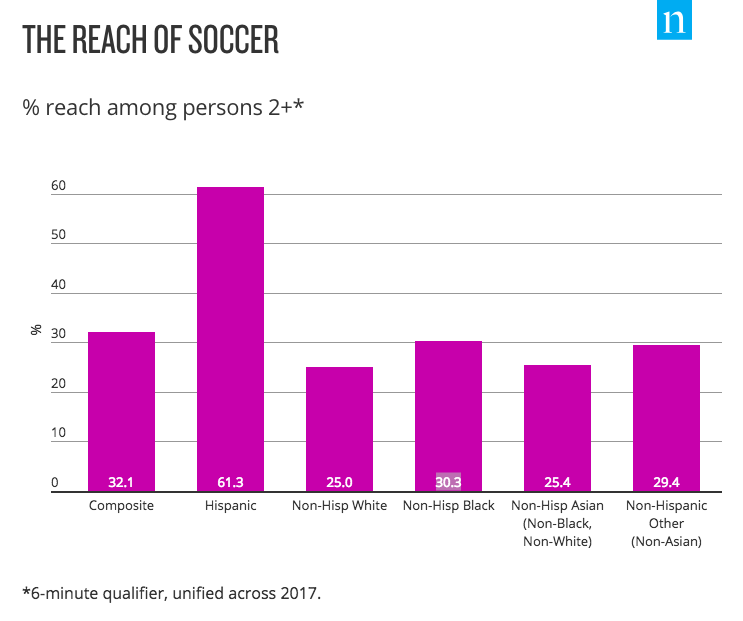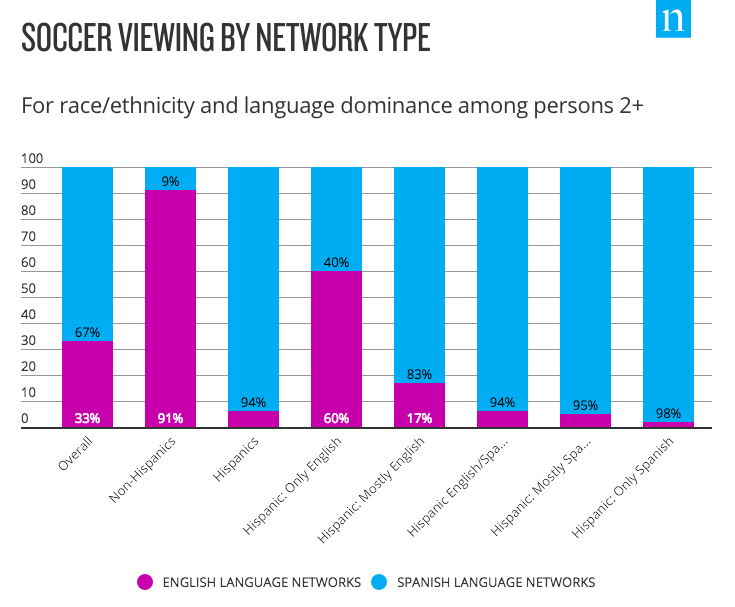The World Cup is a global showcase of sport used as a universal language to connect people from different backgrounds for one simple purpose – love of the beautiful game. As we’ve written in our monthly Soccer on U.S. TV posts and as evidenced by the ever-shifting demographics of this country, Hispanic viewers make up a large percentage of the American soccer audience and help carry passion forward. Whether they’re first- or third-generation, as they become more engrained in American culture, what’s interesting is that for Hispanic viewers, the universal language of soccer is still largely Spanish.
Nielsen recently published a report supporting this and it’s littered with valuable data points, confirming the need for soccer marketers to think Hispanic. In 2017, Hispanics accounted for 68% of all soccer viewership in the U.S. Of the 97 million Americans who watched soccer for at least six minutes last year, 32 million were Hispanic. Based on those two facts, not only are Hispanics much more likely to watch soccer, they are much more likely to watch soccer for longer.
The reach of the sport in Hispanic homes is more than double any other race or ethnicity in the US.

It’s also interesting to note that in the key 18-34 demo, the Hispanic proportion of soccer viewers was 4.9% greater versus non-Hispanic soccer viewers.
What stood out the most in Nielsen’s report was soccer viewing by network type. Hispanic soccer viewers that speak only English watched soccer matches in English 60% of the time. Even though they only speak English, there was still a serious attraction to the Spanish-language broadcasts. Additionally, for Hispanic soccer viewers that spoke mostly English, only 17% of the time did they watch a match on an English-language network, going against their more commonly spoken language.

Often times American marketers focus on the general market and not enough on the Hispanic demographic, which is a mistake. Nielsen’s latest release reaffirms this and lets us know that by focusing resources solely on mainstream English-language TV networks, a good chunk of the country’s more passionate fan base is being ignored. A multi-lingual TV strategy allows networks and brands to talk with all core soccer viewers in the U.S. while best targeting the different subgroups of American fans.
Simply put, soccer crosses language barriers unlike any other sport.
Categories: Hispanic Marketing, Research, Technology
